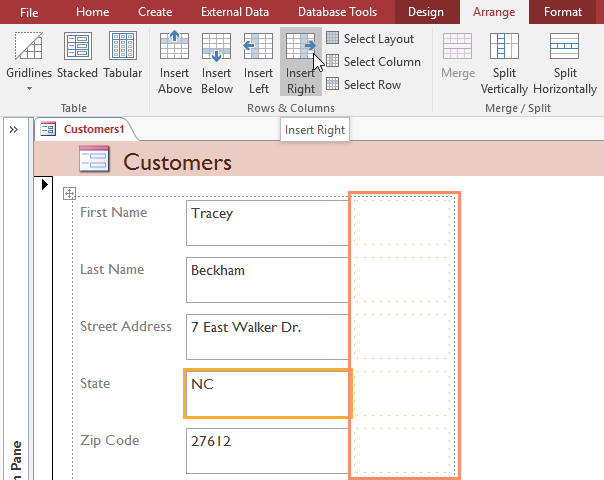Mastering Form Formatting in Access 2016: Enhancing Visual Appeal and User Experience

Microsoft Access 2016 provides users with a powerful platform for database management, and at the forefront of user interaction lies form formatting. Forms serve as the primary interface for users to interact with data, and formatting plays a crucial role in enhancing visual appeal and improving the user experience. Whether you’re a small business owner designing customer information forms or a project manager creating data entry forms, understanding how to format forms effectively in Access 2016 is essential for creating professional-looking and user-friendly interfaces. In this comprehensive guide, we’ll delve deep into the intricacies of formatting forms in Access 2016, covering everything from basic formatting options to advanced customization techniques and best practices.
Understanding Form Formatting in Access 2016
Form formatting in Access 2016 refers to the process of customizing the appearance and layout of forms to improve visual appeal and user experience. Formatting options include adjusting colors, fonts, sizes, alignment, and spacing, as well as incorporating graphics and controls to enhance usability. By mastering form formatting techniques, users can create visually appealing and intuitive interfaces that make data entry and navigation more efficient and enjoyable.
Basic Formatting Options
Access 2016 offers a wide range of basic formatting options that users can apply to forms to customize their appearance and layout. Some of the basic formatting options include:
- Font Styles and Sizes: Users can change the font style, size, and color of text on forms to improve readability and visual appeal.
- Alignment and Spacing: Users can adjust the alignment and spacing of controls and text boxes on forms to create a more organized and visually appealing layout.
- Color Schemes: Access 2016 provides predefined color schemes that users can apply to forms to create a cohesive and visually appealing design.
- Borders and Shading: Users can add borders and shading to controls and sections of forms to create visual distinction and highlight important information.
Advanced Formatting Techniques
In addition to basic formatting options, Access 2016 offers advanced formatting techniques that users can use to further customize the appearance and functionality of forms. Some of the advanced formatting techniques include:
- Conditional Formatting: Access 2016 allows users to apply conditional formatting to controls on forms based on specified criteria. Conditional formatting enables users to dynamically change the appearance of controls based on the data they contain, making it easier to identify trends and patterns.
- Custom Controls and Graphics: Users can create custom controls and graphics to add visual interest and interactivity to forms. Custom controls and graphics can be used to display logos, icons, buttons, and other graphical elements that enhance the user experience.
- Themes and Styles: Access 2016 offers predefined themes and styles that users can apply to forms to create a consistent look and feel across multiple database objects. Themes and styles include predefined color schemes, fonts, and formatting options that users can apply with a single click.
Improving Usability and Accessibility
Form formatting in Access 2016 isn’t just about visual appeal—it’s also about improving usability and accessibility for all users. Access 2016 offers several features and techniques for improving usability and accessibility, including:
- Keyboard Navigation: Users can configure forms to allow for easy navigation using the keyboard, ensuring accessibility for users with mobility impairments or who prefer keyboard navigation.
- Screen Reader Compatibility: Access 2016 ensures compatibility with screen reader software, allowing users with visual impairments to navigate and interact with forms using assistive technology.
- Accessible Design Practices: Access 2016 encourages the use of accessible design practices, such as providing descriptive labels for form controls, ensuring proper tab order, and avoiding flashing or blinking elements that may cause seizures or other adverse reactions.
Best Practices for Form Formatting
When formatting forms in Access 2016, it’s essential to follow best practices to ensure a consistent and user-friendly design. Some best practices for form formatting include:
- Consistency: Maintain consistency in layout, colors, fonts, and formatting throughout all forms in the database to create a cohesive user experience.
- Simplicity: Keep forms clean and uncluttered by avoiding unnecessary elements and excessive formatting. A simple and intuitive design makes it easier for users to navigate and interact with forms.
- Whitespace: Use whitespace effectively to create visual separation between elements and improve readability. Proper spacing can help guide users’ eyes and focus their attention on important information.
- Testing and Feedback: Test forms with real users and solicit feedback to identify any usability issues or areas for improvement. Incorporate user feedback to refine and optimize form designs for better usability and user experience.
Conclusion
Form formatting in Microsoft Access 2016 is a critical aspect of database management, enabling users to create visually appealing and user-friendly interfaces for interacting with data. By mastering form formatting techniques and following best practices, users can design forms that enhance visual appeal, improve usability, and optimize user experience. Whether you’re a beginner or an experienced user, understanding how to format forms effectively in Access 2016 is essential for creating professional-looking and intuitive interfaces that streamline data entry and improve productivity. With Access 2016, users can leverage the power of form formatting to create database applications that meet their specific needs and objectives while providing a seamless and enjoyable user experience.







